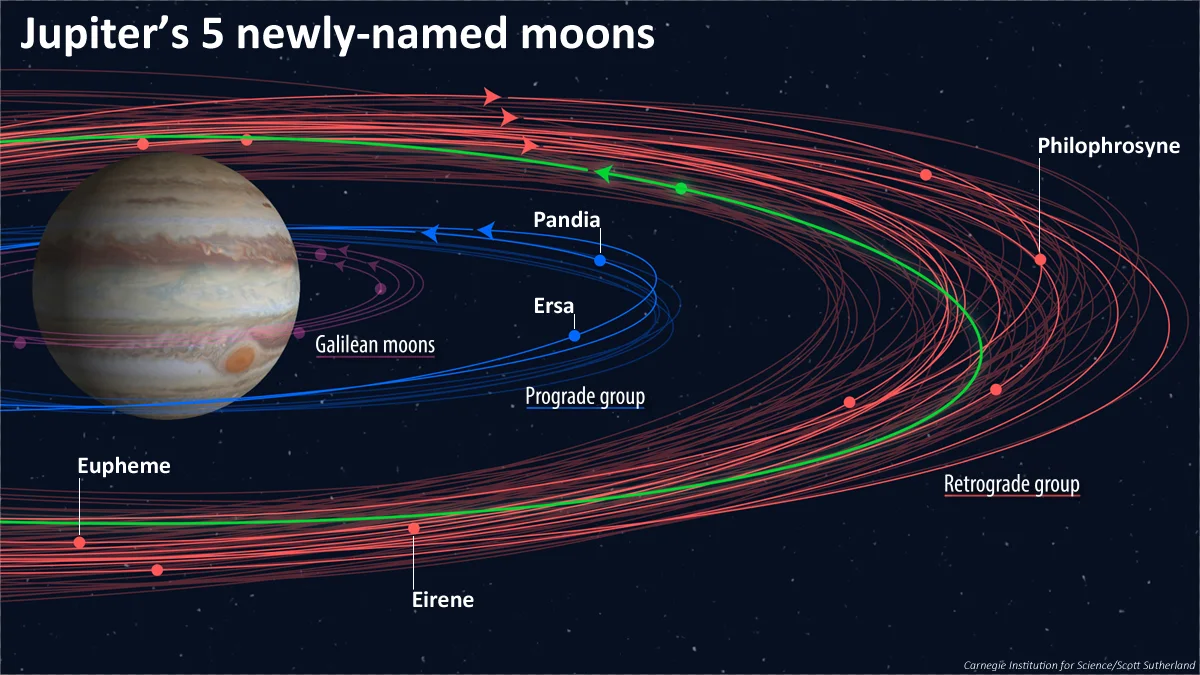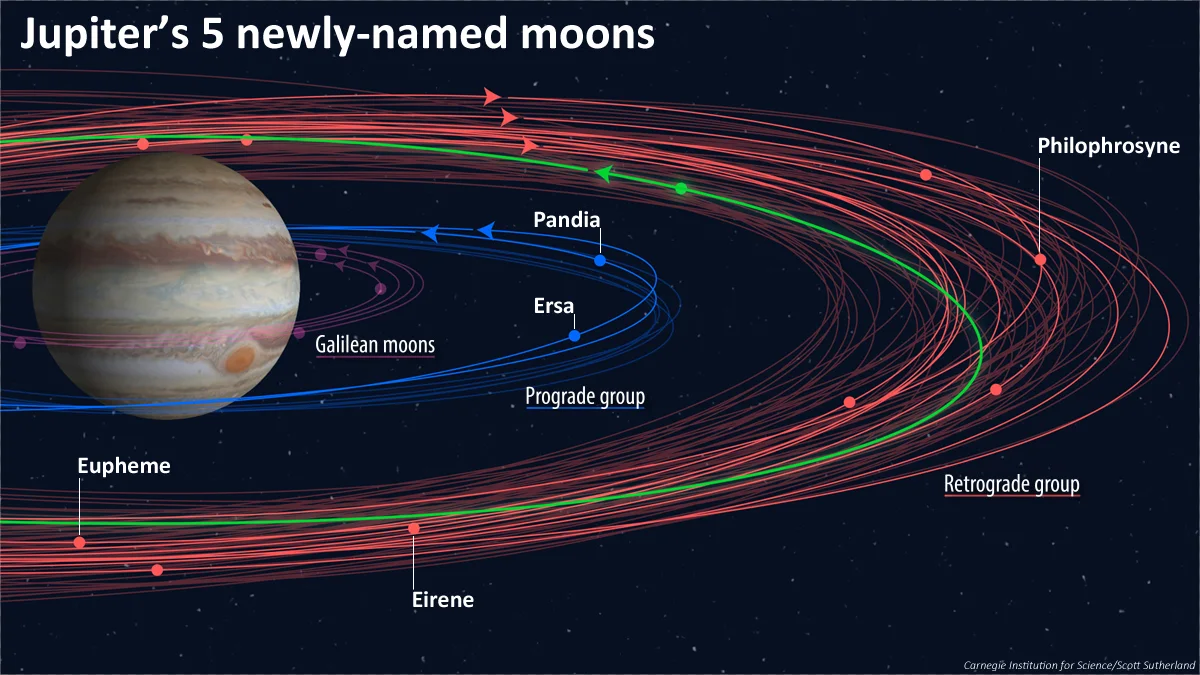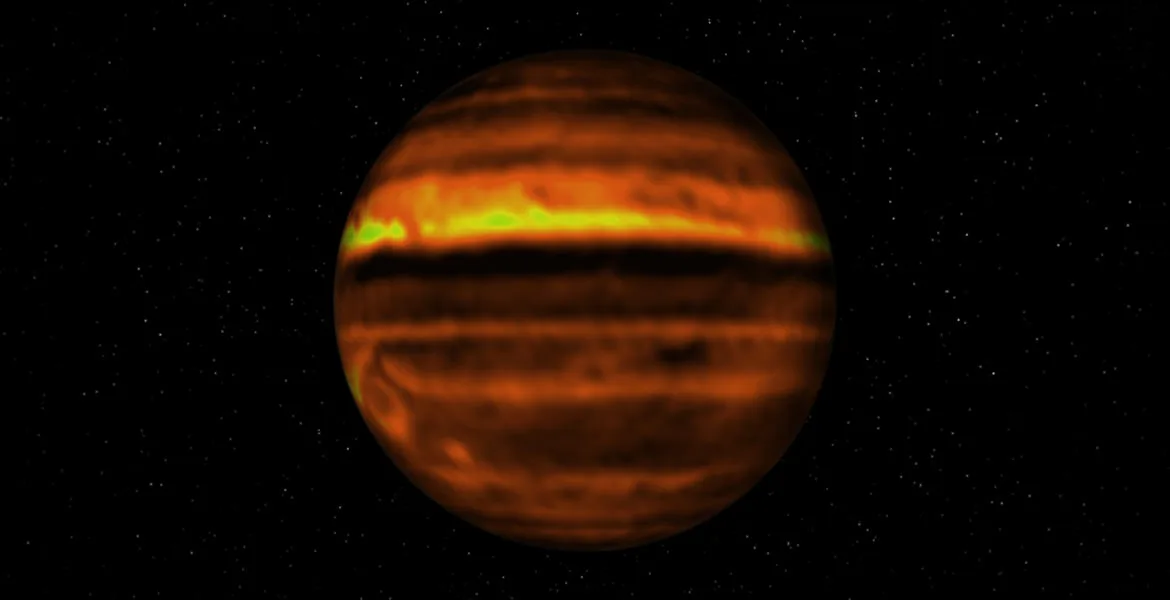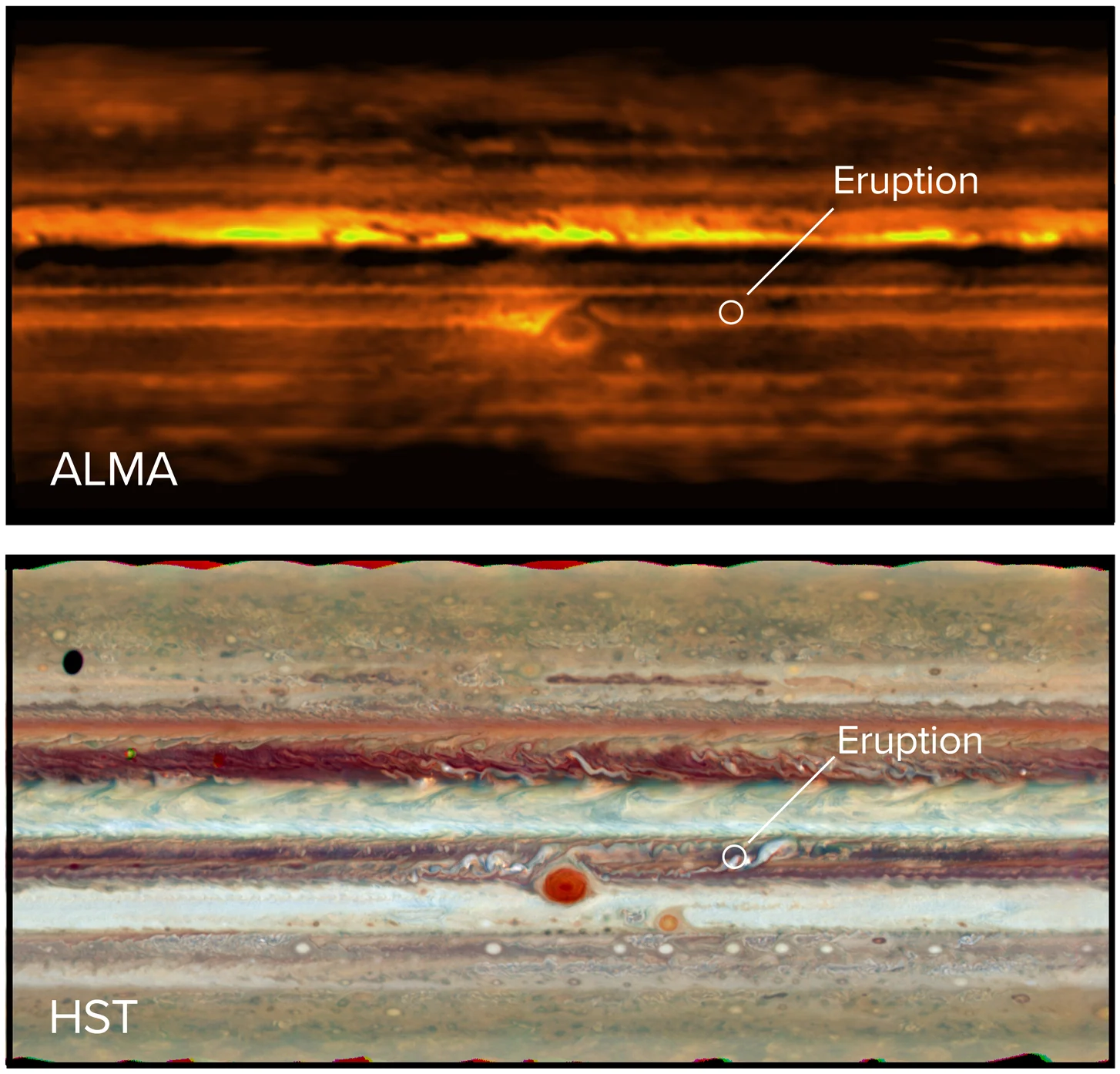
Say hello to Jupiter's five newly-named tiny moons!
What's Up In Space? Jupiter's newly-discovered moons get their newly-chosen names, and astronomers map out an immense eruption on the gas giant planet.
When something new is discovered in the solar system, it typically starts off with a fairly dull name - a mishmash of letters and numbers that simply denotes to astronomers what kind of object it is, and when that object was found.
Astronomer Scott S. Sheppard, from the Carnegie Institution for Sciences, has been involved in the discovery of dozens of new moons around Jupiter, the largest planet in our solar system. When each of these moons was discovered, it was immediately assigned a name starting with S, for Satellite, followed by the year it was found, then a J for Jupiter and a number based on what order it was discovered in that year.
Thus, the moon S/2018 J1 was the first newly-discovered moon to be found orbiting Jupiter in the year 2018.
Since we like to name things something a bit more interesting, however, these boring 'designations' don't last very long. Astronomers come up with much catchier monickers to use for these objects, which they then pitch to the International Astronomical Union for approval.
Earlier this year, however, Sheppard and his team at Carnegie came up with a better idea. They handed off the naming of five newly-discovered moons of Jupiter to the public!
They started a hashtag #NameJupitersMoons, set down some rules, and they left it open to us.
"There are many rules when it comes to how we name moons," Sheppard said in a Carnegie press release on Friday. "Most notably, Jovian naming conventions require its many moons to be named after characters from Greek and Roman mythology who were either descendants or consorts of Zeus, or Jupiter."
According to Carnegie: "From February to April, we solicited name suggestions and the submissions ranged from the scholarly to the silly, including some inevitable Moony McMoonFaces and a surprisingly large number of people who felt strongly about naming the moons after a beloved pet. We combed through them all - even the ones that blatantly disregarded the rules - and passed the best ones on to the International Astronomical Union."
When the IAU returned the final selections, Sheppard and his team announced the new names for these five moons!
In chronological order:
S/2003 J3, an outer 'retrograde' moon, is now Eupheme, the spirit of praise and good omen, the granddaughter of Zeus, and the sister of Philophrosyne.
S/2003 J5, another outer retrograde moon, is now Eirene, the goddess of peace and the daughter of Zeus and Themis.
S/2003 J15, a third outer retrograde moon, is now Philophrosyne, the spirit of welcome and kindness and is the granddaughter of Zeus and sister of Eupheme.
S/2017 J4, an outer prograde moon, is now Pandia, the daughter of Zeus and the Moon goddess Selene. Pandia is the goddess of the full moon and the sister of Ersa.
S/2018 J1, another outer prograde moon, is now Ersa, the sister of Pandia and, as such, also the daughter of Zeus and the Moon goddess Selene. Ersa is the goddess of dew.

These newly-named moons are denoted on this image showing the various groups of Jupiter moons. The green orbit is for 'daredevil oddball' moon, Valetudo, a moon travelling against the 'flow of traffic' in the outer retrograde group. Credit: Carnegie Institution for Science/Scott Sutherland
IMMENSE ERUPTION REVEALS WHAT'S INSIDE JUPITER'S STORMS

This radio image made with ALMA shows bright bands of high temperatures and dark bands of low temperatures in Jupiter's clouds. Compared with visible light images of Jupiter, dark bands here correspond with white belts, and bright bands correspond to the brown belts. Credit: ALMA (ESO/NAOJ/NRAO), I. de Pater et al.; NRAO/AUI NSF, S. Dagnello
It seems that Jupiter doesn't do anything small, and it proved this again in the first days of 2017 when an immense eruption of ammonia gas emerged from one of its southern hemisphere cloud bands, which was big enough for amateur astronomers to spot from Earth!
Quickly jumping on this discovery, a team of astronomers pointed the Atacama Large Millimeter/submillimeter Array (ALMA) - a cluster of antenna dishes located in northern Chile that measure some of the coldest objects in the universe - at Jupiter, in the hopes of mapping out this eruption, and potentially learning something new about the giant planet.
Measuring the radio waves given off by Jupiter, ALMA was able to peer beneath the cloud-tops, to see what was going on inside the storms raging in Jupiter's atmosphere. Comparing this map to Hubble Space Telescope images from the same period of time revealed the visible effects of this plume on the cloud band.
According to the National Radio Astronomy Observatory, storms that pop up in Jupiter's bands, which are comparable to thunderstorms on Earth, show up as small bright clouds, above the different layers of the atmosphere - the ammonia ice at the top, the solid ammonium hydrosulfide particles below that, and what is probably a layer of liquid water beneath that, about 80 kilometres down.
What ALMA showed is that these storms, which are effectively powerful plumes of ammonia rising through these different layers, likely begin at the base of clouds made of water vapour, potentially confirming the presence of the water layer deep below Jupiter's cloud-tops.
"Our ALMA observations are the first to show that high concentrations of ammonia gas are brought up during an energetic eruption," Imke de Pater, of the University of California, Berkeley, said in an NRAO press release. "The combination of observations simultaneously at many different wavelengths enabled us to examine the eruption in detail. This led us to confirm the current theory that energetic plumes are triggered by moist convection at the base of water clouds, which are located deep in the atmosphere. The plumes bring up ammonia gas from deep in the atmosphere to high altitudes, well above the main ammonia cloud deck."

Both of these flat maps of Jupiter, in radio waves with ALMA (top) and visible light with the Hubble Space Telescope (bottom), show the eruption in the South Equatorial Belt. Credit: ALMA (ESO/NAOJ/NRAO), I. de Pater et al.; NRAO/AUI NSF, S. Dagnello; NASA/Hubble
Sources: Carnegie Institution for Science | National Radio Astronomy Observatory











